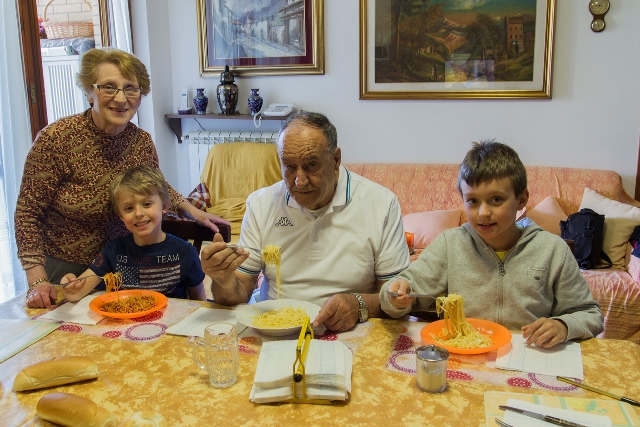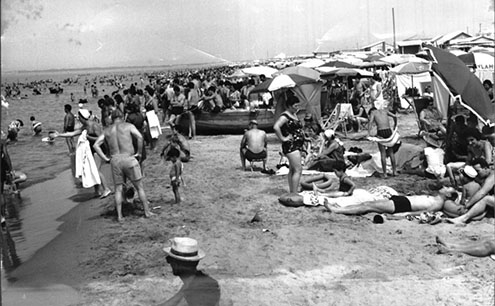Behind the Scenes: Inside a Rome Apartment
Roman apartments are like no other. For one thing, they’re generally very old, which means they all come with their own quirks and idiosyncrasies. For another, their kitchens and dining rooms are always at the heart of the home, with traditional cucina romana emanating from the hearth… Let’s take a look behind the scenes of a real Roman apartment and get a glimpse of what life was like for Italian families past and present!
The History of the Roman Home
During the 2nd century, life for wealthier Romans meant a fusion of their culture together with the Greeks – which in most cases meant that Roman houses became larger and better organized. It was also enriched by a new environment: a garden courtyard called the peristylium. This area quickly became the center of Roman family life. The entrance to the peristylium was through a corridor (andron), which led to the dining room (triclinium), kitchen (culina), pantry (cella penaria) and cellar (cella vinarea).
Roman Homes Two Millennia Years On
2,215 years later, the layout of a Roman house has not changed much. Obviously, the spaces are smaller, but the concept of concentrating the daily lives of our families in the dining room and kitchen has remained unchanged. There, we host family, welcome friends, discuss business problems or politics. And usually you can see the whole family – at around 8 pm – sitting down for dinner. If I had to describe a real Roman home, I would always begin with its genuine core: the kitchen and dining room, which always contained an Italian mother and nonna (grandmother).
My grandmother and mother stayed home most of the time. The house was always in perfect order, everything in its place. And things remained in the same place for years; you did not move anything. I was at my parents’ house recently and saw a model gondola on display in a cabinet. The gondola was a trinket from their honeymoon in Venice in 1963. Both the cabinet and the gondola have been in the same position ever since. We respect the traditions so much that we might actually fear them; and so we do not change anything. In fact, if you needed to find something in the house and you asked my mother, her only answer was always: “It’s in the usual place!” And it was. But we always asked just the same. Perhaps in our hearts we were hoping that she had moved it, even just a couple of centimeters. But she never did. A creature of habit.
Kitchen Traditions
This respect for tradition or habit was also upheld in the kitchen. There are certain rules my mother would never break. Pasta with broccoli was always served with fusilli, because the curls allow more broccoli to cling to the pasta. Pecorino was never used for pasta in bianca (a simple pasta dish involving just garlic, butter, cheese and seasoning) – that was a dish served only with Parmesan.
My mom’s kitchen was a fraction of the size of an American one you could check here. Nevertheless, it was a small hub where you could easily cook for 150 people. With just a few ingredients and many helpful tricks, my mother could make an endless array of dishes.
Because of our ancient culture, the kitchen and the food cooked and served in it have always played an important role. Our cuisine is poor (meaning it costs very little), not very fancy, but very tasty and nutritious. It’s always been a cuisine based on the need to feed lots of people, and we therefore use the less valuable parts of an animal. From this necessity, we had to invent the best way to cook and create what are now considered world-famous dishes.
Family Roles and Responsibilities
Here, nothing is pre-prepared or ready to cook. Everything is done in its own time. You think about what to make, you go to the grocery store, and you begin to prepare. There were many meals which required help from the different family members. My brother and I would take out the garbage while my mother stirred the sauce. My sister would set the table. We all helped, except my father. As the head of the family (or paterfamilias, if we go back to the Roman origins), he would sit at the table once everything was ready, and he got up only when the meal was finished. I have never seen him set or clear the table, but I have never heard him complain either (quite possibly because my mother cooks really well). Of course, it’s totally different now that I am the pater familias (times have changed!). But that’s another story…
Romans are lucky to have a variety of dishes and foods available to them – we never eat the same thing in the same week. This always added to the pleasure factor of a meal: the element of surprise made each meal more exciting. It was always nice to come home after a long day of school or work and discover what was bubbling on the stove. Or to enter the kitchen and ask, “Mom, what’s for dinner?” Whatever it was, it would definitely be delicious.
My most beautiful family memories are those experienced in the kitchen; seeing my mother preparing fresh pasta dishes, or a roasted chicken and potatoes with rosemary, and then sitting down to enjoy the fruits of her labor. Just thinking about it makes me hungry.
Eating Italy Food Tour
Authentic Rome Apartment





